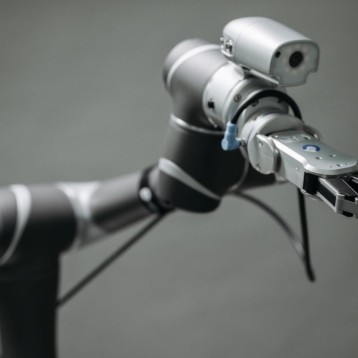Orion is the capsule that resembles the Apollo program’s spacecraft. Its objective is sending humans to the moon, and the U.S. National Aeronautics and Space Administration (NASA) set the deadline to the year 2020. Although political and technical issues hindered the project, NASA continued their efforts to minimize the violent impact that astronauts would experience during landing, since they understand the eventually the aircraft will take off, and therefore it requires complete protection for its astronauts.
The original design was sufficient for landing on water, but it could not hold when landing on solid ground; the 1,100-pound structure would be too heavy to cushion the astronauts within. Although plans are to land it on water, NASA wants to make sure that Orion can land on land in case of an emergency.
Now, thanks to the design by a graduate student from Massachusetts Institute of Technology (MIT) Department of Aeronautics and Astronautics, a new solution was offered: a reusable, 700-pound air-bag system that could inflate during launch and landing, deflate for storage purposes, and partially inflate to provide seating while the vehicle is in space. Not only would the system be lighter than the one NASA originally proposed, but it would also be entirely mechanical, meaning not controlled by computers.
According to Sydney Do, one of the engineering team members, the importance of the system independence (not relying on computer) is due to the fact that the vast majority of accidents and failures in such systems can be traced to computers misinterpreting situations. “Our goal was to see if it was possible to design a landing system that was purely mechanical,” he said.
Do and his thesis adviser, Olivier de Weck, an associate professor of aeronautics and astronautics and engineering systems, presented their design in a paper submitted to the American Institute of Aeronautics and Astronautics Space. Their work is inspired by the structure of seeds: just as a fluid surrounds the embryo in seeds to provide protection as the seed is distributed, the Orion air-bag system would surround each astronaut.
The innovative air-bag system provides “a personal cushion of air,” says current NASA astronaut Charlie Camarda, who seeks to develop more innovative space-engineering concepts that veer from the traditional. Camarda believes the new design represents “a very novel” approach to mechanical design that could inspire more biological-based solutions in engineering.
The researchers’ first step was conducting tests, designed to observe how the inflated bags behave when they are dropped from increasing one-foot increments while supporting an object that weighs about the same as an average male head. Such drops simulate the impact velocity that an astronaut would feel upon landing. The results of these tests revealed how important timing is in terms of releasing gas from an air bag; unlike car air bags, which inflate when hot gas is injected into them upon impact, the inflated Orion air bags already contain gas upon impact. Therefore, if the air bags are either not big enough or do not have enough air in them, the astronaut’s seat will directly impact the ground. Alternatively, if there is enough gas inside the bag, but it is not released before the seat hits the ground, the impact will cause the seat to bounce upward, which could injure the astronaut. That is because when an astronaut falls into the bag during the landing, the kinetic energy created from this motion is combined with the energy of the gas molecules moving inside the bags. This increases the pressure of the gas inside the bag, which could cause bouncing.
The second step was understanding how this bounce could be prevented. The tests showed that gas needs to be vented between the point at which the floor of Orion impacts the ground and the point at which the seat and the astronaut impact the ground so that the kinetic energy caused by the falling seat and occupant have been removed. But even after some of this gas is vented, there still needs to be enough gas remaining in the bags to prevent direct impact between the seat and the ground. To get this balance right, the team decided to design valves that are triggered to open at a low pressure, which would allow gas to vent as soon as Orion’s floor comes to rest, but before the seat can impact the ground.
The team of scientists was originally without Do, but he took over the research for his master’s thesis and began testing a valve for the system. He was the developer of a computer model made to analyze how certain variables, such as air bag size, would affect the risk of astronaut injury upon impact. This helped him configure a prototype seat that would have four air bags — each about one foot long by two feet wide — containing two rectangular valves about six inches wide. Do then built the air bags from Vectran, a high-strength material that was used to make the air bags for several rovers that landed on Mars.
Do admits that he still needs to analyze several results before presenting his final design to NASA. The main results are from tests that involved the prototype he made; these tests include various drops, conducted from as high as 10 feet. The acceleration of each drop was measured using a crash dummy.
When asked if the results are positive, Do said that the system survived dozens of drops; therefore he thinks that certain variables he chose for the prototype (such as the material and manufacturing of the air bags) are adequate for an Orion landing. According to Camarda, future research could explore ways to ensure “a robust and fail-safe” system in the event that a valve malfunctions.
While he is optimistic, Do cautions that the air-bag system has a major drawback: It is likely only effective for vertical drops, meaning that the air bags could tip over if Orion descended at a sideways angle. Then again, it is not an issue if Orion is designed to land vertically.
Although NASA has yet to decide whether to fully implement Do’s design, he is hopeful that even if Orion never takes flight, his research could be used to guide designs of similar capsule-type spacecraft. For instance, commercial companies might be interested in the concepts he presented.
TFOT has also covered the Phoenix Mission, designed with the older version of “space air-bags,” and the D-Air Inflatable Motorcycle Airbag, developed by the Italian company Dainese to protect riders.
For more information about the new “air-bag” system for the Orion project, see MIT’s official press release.











